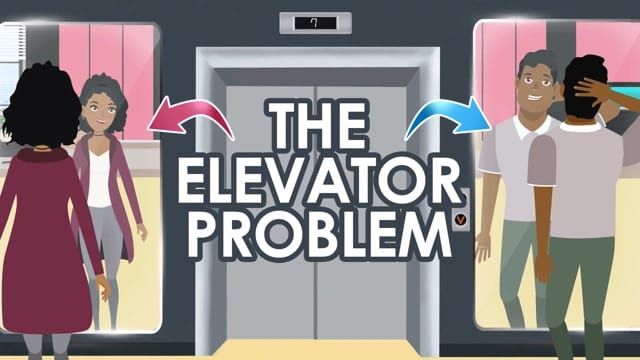12 Team building activities for kids
In this guide
Team building exercises are a great way to bring fun, critical thinking, and bonding time into your classroom. From in-person classrooms to remote sessions, there are various ways to incorporate these activities into lessons for your students.
Benefits of team building for students
Team-building exercises are a great way to build an environment in your classroom that fosters collaboration, peer support, and critical thinking. They can be short 5-minute activities as quick energisers or more extended activities with outputs your students need to build and present. Regardless of the intent, there is an activity out there that will work in your classroom.
In my classroom, team-building exercises were a great way to reinforce the feeling of community and give students who may only sometimes work together time to collaborate and problem-solve. I used them as quick icebreakers on typical class days and longer sessions when we returned from extended school breaks. The great thing is that there is usually a way to fit them in any subject area.
Below are a few different team-building activities you can use in your classroom. These activities will be tagged by skill, age, and learning environment (in-person vs virtual).
My favourite team-building activities for the classroom
There are many options for team-building activities, and with a quick Google search or a look on Pinterest, you will find a lot! This is a consolidated list of activities I have used or educators I know have used in their classrooms. These activities are divided into 4 categories: Communication, Problem Solving, Team Work, and Community.
Communication
Communication activities are fun ways to test students’ ability to listen, look carefully, and speak considerately.

1) Telephone (primary | in-person)
The classic telephone game is one I played as a kid and still gets students excited. It is a simple concept that focuses on students’ listening and communication. For this activity, you want your students to line up. The first student in the line should think of an appropriate sentence to whisper in the ear of the person behind them. This repeats until the last person hears the phrase and then says out loud what was shared. You can start with one word to practise, but I recommend picking a phrase or a non-rhyming sentence for the actual activity to pick up the difficulty.
This activity is recommended for primary students but can also work with high school students. To add complexity for older students, have each student whisper the phrase and then add something additional. If you pick the more complex route, you could have each student add a word to form a sentence (easy option) or add a sentence (more challenging option).
I used this as a PDH activity to demonstrate the power of misconceptions and miscommunication. Errors were bound to be made at some point throughout the line, so this would lead to a discussion about rumours and hearing things second-hand, rather than directly from the source.
Students can complete this activity independently to develop listening skills further: Are you a good listener?
2) Silent ball toss (multi-age | in-person)
Silent ball toss is an easy game that focuses on understanding body language and intention. Gather your students in a circle. You will have one ball to start this activity. The point of the game is for the student with the ball to toss the ball to another student without calling their name or giving them a signal. That student then needs to catch the ball and continue the activity.
You will want to set some ground rules for this. Students shouldn’t make crazy faces or mouth the other person’s name to signal they will throw the ball at them. In my classroom, students would think of elaborate loopholes, so it’s time to update the rules as you go! Bring in more than one ball if you want to add a challenge.
Your students may benefit from using softer items in this activity. A small stuffed animal, an eraser, or any lighter object with soft edges or sides are suitable.
A word of warning! This activity does mean an object will be thrown in your classroom. Make sure you have students in an area where it is okay to throw the ball, and also model how you would like the ball tossed. Some students will likely throw the ball like a dodgeball, so it’s important to be clear about the expectations from the start.
A key body language skill is the ability to understand and read microexpressions. Students can learn about microexpressions and practice identifying them by completing the activity by watching the video: Microexpressions.

3) Draw it (upper primary & secondary school | online)
A fun online game to play is Draw It. This activity involves students drawing a picture based on the speaker’s description. It is an excellent activity for students to practice giving clear and precise instructions while the other students focus on listening. This activity can be completed in an in-person or online environment. As a note, the instructions below are for online.
For this activity, you will need to split your students into groups. Send each group to a breakout room and tell them to bring one person back to speak to the teacher. The teacher will then share two images the speaker needs to instruct their group to draw. Let them know that in the instructions, they cannot say the name of anything in the picture or answer questions about the instructions. They can only repeat the instructions.
To give higher stakes, you can set a time limit as well. For 2 images, I recommend 2- 3 minutes. Once the time is up, bring everyone back to the main room. For the first picture, have all students share their images. Review the pictures and ask students if they drew the same thing or what was different between them—repeat for the second image. You can repeat the process with a new speaker.
I have done this activity in-person with secondary school students as well, and it always led to some amusing pictures. I found that humour is one thing that tends to bring this age group together quite well. My students tended to bond over the goofy pictures that were drawn, but they also shared encouraging words for their classmates who drew pictures that closely matched the descriptions.
4) Visual stories (upper primary & secondary school | in-person & online)
Students use emojis and memes to communicate complex thoughts and ideas with images, so why not allow them to share their favourite ones? For this activity, students will share two memes to communicate a story or a mood.
To complete the activity, each student will get 5 to 10 minutes to find their memes and then put them on a slide to share with the class. If you are in person, your class can guess the story or mood aloud, or online, you can guess in the virtual classroom.
There are many memes on the internet, so you should ensure they are age-appropriate for a classroom environment. I shared memes regularly with students, ensuring that they were related to either what we were learning or an appropriate current events topic. This modelled the expectations for appropriate topics to be featured in the memes.
5) Emoji modification
You can complete this activity using emojis instead of memes, still requiring that a mood or story be shared. If you are feeling creative with emojis, you can also have students choose 5 random emojis, and then they must make up a story or write a poem based on the emojis. My students enjoyed doing this because it uses a language they love.
Check out these additional communication activities that students can complete on their own.
Problem solving & critical thinking
The activities below focus on students solving problems and using critical thinking skills to complete the tasks.
6) Human knot (multi-age | in-person)
The classic activity that has been completed in classrooms all over the world is the human knot. Although it is an older game, it is a classic and makes the list for a reason. It is a great way to create bonding between students and engage their minds, and it’s fun! Below are some instructions you can use for the activity.
- Have your students stand in a circle, shoulder to shoulder, facing inward.
- Each student should extend their right hand into the centre of the circle, grabbing the hand of someone across from them.
- Then, they extend their left hand into the circle, grabbing a different person’s hand.
- Ensure that everyone is holding hands with two different people and no one is with someone directly next to them.
Now, the fun begins. Students need to untangle themselves without letting go of their hands. How they do this is up to them, but ultimately, they need to keep their hands held and in a circle. This activity is very physical, so make sure your students can complete it without hesitation, and you have the time to do so.
You can repeat the activity and then change the instructions to add difficulty. In the next round, have students refrain from talking, or require students not to repeat instructions, meaning each person must instruct before you can give another one. You can also allow students to make additional challenges to make the activity more difficult!
I did this activity with primary-aged kids when I was a vacation care teacher. One fun modification we did was assigning a knot captain to each group. This person was responsible for making sure the group stayed on-track, and they also had to give the final go-ahead for each move that was made. Typically the knot captain was an older kid who was seen as a leader, but sometimes each group simply chose one of their members at random.
Note that to help promote inclusivity and accessibility, create a judgement-free zone and adopt a flexible approach when starting the activity.
When giving the instructions for the human knot, make it clear that participants should engage at the level they feel comfortable with. For example, a student may not feel comfortable physically playing but would like to participate in giving instructions.
To maintain a flexible approach, always think of your unique students’ needs. Be ready to make key adjustments to meet their needs and remain open to requests if students ask for changes to the activity.
By keeping both approaches in mind, you can ensure the activity is engaging for all student needs.
7) Where are you? (upper primary & secondary school | online)
Where is Waldo? All over the world! Many fun sites will show you images of a random place, and you must guess where you are. The images are usually generated from Google Maps, and students must use critical thinking to help them identify clues to figure out where they are.
This activity uses something called “where are you” websites. For example, a website like City Guesser will take you to a random city. Websites like GeoHub will take you to a different country or place.
To complete an activity like this, you should direct students to your favourite “Where Are You” website. Then, set a time limit and have students go into breakout rooms to complete the activity. One person should share their screen, and the other students should help them identify where they are. Figuring out where you are can take some time.
As a note, you can complete this activity even if your students haven’t traveled a lot. Over time, students could start recognising patterns in the areas and understand what clues they needed to find to figure out where they were. This is a great tie-in to social studies as well. When I did this activity, I would reinforce the map and location skills that my team social studies teacher taught them because they do come in handy with this activity.
For example, they would look for signs of language to understand what part of the world the area could be in. They would look at car number plates or even what side of the road people drive on. This is an excellent way for students to start thinking of places different from their own environment.

8) Build it (multi-age | in-person & online)
A popular team-building activity to complete with students is build-it. This activity involves giving students various items, and they must construct something based on the theme provided. It is a great way to push students to think outside the box and solve problems with the materials provided. It’s also a wonderful tie-in to the engineering curriculum in science.
You will see ways to complete this activity in person and online.
In-Person
If you complete this activity in person, you should pick a theme before the activity and think of the materials you want to use. They should be non-traditional materials to force students to think creatively. For example, if you want them to build towers, give them paper, a few pieces of tape, and string. Or if you want them to build a car, provide a box and paper only. I recommend using readily available materials in your classroom rather than purchasing new things, as it is meant to be a challenge. Recyclable materials are also great for this purpose. I used to collect random recyclables for a month prior to the activity, then provide specific items to the students.
Have your students split into small groups of a maximum of 3 people, as it creates a situation where everyone must participate. You should introduce the theme and then provide the materials to groups. After that, set a timer and go! Depending on the complexity of the theme, this activity can take 5 minutes to 1 hour.
No matter the time limit, make sure you have students present their work afterward!
When giving your theme, you can add an engineering or presentation challenge. For example, if they build a tower, maybe it has to withstand a wind test, meaning you blow on it for 5 seconds, and it can’t fall over. If it is a car, it may roll down an incline for 30 seconds without falling apart. I even had students build bridges that had to withstand a specific weight in paperclips, which turned it into a class competition for which bridge could hold the highest weight for the longest period of time.
Online
Students can also complete the building activity online. You still want to decide on a theme, but your approach will affect what students produce.
The first approach is to have one student build and the others provide feedback. In this option, one student would quickly find materials in their space and build based on their team’s instructions. You can have one person or the whole team complete it and give each other feedback.
The second option is having students design a prototype without building it. For this activity, students find three items on their desks or in the room, the only items they can use in the prototype. Then, they discuss what they could build with those items and draw their ideas. They would then present their design as a group.
In either case, students will be involved in designing and using unconventional materials to complete the activity.
9) Scavenger hunt (multi-age | in-person & online)
A scavenger hunt is a famous team bonding exercise in which a group of students is given clues and finds items or places based on those clues.
For the scavenger hunt, you have a few options. You can either have students find items or do tasks. Finding an item involves giving clues to find a specific item, like “This is something you can fill with warm liquids and can be enjoyed on a cold day.” The item the student finds is a tea or coffee cup.
You could also give clues about the actions students need to take. “Learn how to slide with a charge” can be a clue that prompts students to do the Electric Slide.
In a scavenger hunt, students must show proof of the items found. They could use a camera or tablet to document each item found or action performed.
If you complete this online, you can have students go into breakout rooms to complete the tasks. For actions, they could record themselves and share them with the class.
In my classroom, we used FlipGrid so my students could upload their found items or perform tasks as they completed them. This allowed for easy photo and video upload, which could be submitted and/or shared on Google Classroom.
Your school may use a different platform, but before starting this activity, decide how you want students to share and ensure it is easily accessible so they can upload materials without issues.
Additional problem-solving activities
Check out these critical thinking activities that your students can complete independently.
Bonding
Sometimes, the team-building exercises you want to complete help build connections between your students and let them get to know each other. The activities below focus more on forming those connections. Many bonding activities can be completed in person or online with slight modifications.
10) Whose emojis (upper primary & high school | in-person & online)
Students widely use emojis, and many have a favourite. For this activity, ask students to share their top 5 emojis. These should be sent anonymously so students can guess which groups of emojis represent each of their classmates. If using an online environment, the students can send a message directly to their teacher, and the teacher can then copy and paste the emojis into the group chat.
This activity is logistically more straightforward to complete online but can also be done in the classroom. If done in person, students should send their emojis the day before to the teacher so they can create a slide or other form of presentation to share.
Emoji activities can be used for any level, but I would recommend upper primary, middle, and high school classrooms. I often found that younger students struggled to interpret the meaning behind emojis as easily as older kids who used them regularly.
11) Would you rather (multi-age | online)
As a quick ice breaker, I would use a “would you rather” game to energise my students. It is a straightforward concept. You provide a prompt where students pick between two scenarios and then justify their answer.
Simple ideas could be “Would you rather eat pizza or pasta?” or “Would you rather fly or read someone’s thoughts.” You can decide on the prompt or allow students to share their ideas.
Instead of words, you can also use images to showcase the options. For example, you can show a picture of snow and rain to ask if students prefer snowy or rainy environments.
This activity can be completed both online and in-person. I did it on zoom by using the chat feature and then having students unmute to explain why they chose their option. I also did it in-person at the beginning of class to get students engaged with their peers for the period. It was a quick and fun way to gather students’ perspectives, and even sometimes to spark a friendly debate.
12) Jackbox games (multi-age | online)
If you are interested in online games, Jackbox Games is a great place to find various games that students can play. Jackbox Games has a variety of party packs. Each party pack has 5 games, and so far, there are 10 party packs. Each game has a different theme, but many revolve around drawing or completing silly activities.
To play, students would need to use a device with a browser, like a laptop or phone. Students are given a code to the game and can then play as a team.
Games like Quiplash and Tee K.O. are fun to play with your students.
Jackbox Games is a paid service and you will also need to download the games to your computer. If you are interested in Jackbox Games, you can learn more about using it in your classroom through their website.
Some alternative online games are free. Skribbl.io is a free online Pictionary game that allows you to set up a private room for your class. You can also google “Free alternatives to Jackbox Games” to investigate other options online.
Finding resources online
Team building activities are popular for all ages, and many resources are available online. If you are interested in searching for more materials, be as specific as possible. Including keywords like age range, type of skill to practise, and time constraints will give you a list of articles or suggestions from educators worldwide!
Possible search options:
- team building activities + neurodivergent
- team building activities + “critical thinking”

Mark Brown
briefcase iconContent/Production Consultant
Mark spent 9 years as a middle school teacher before transitioning to the educational technology field. He was formerly the US Content Lead for ClickView, and has continued with the organization as a content and production consultant, contributing to curated topic pages, educator articles, and the production of new videos.
Other posts
Want more content like this?
Subscribe for blog updates, monthly video releases, trending topics, and exclusive content delivered straight to your inbox.














